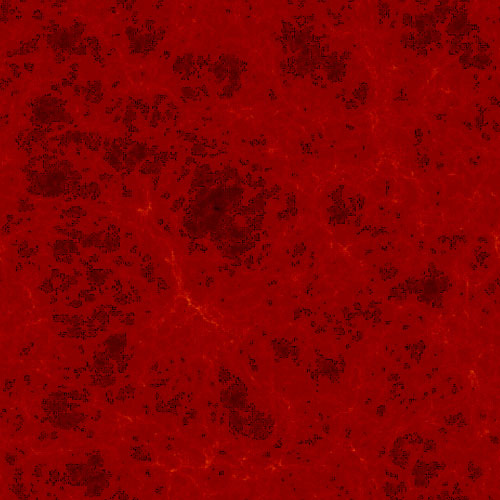First Sound Waves Left Imprint on the Universe

SAN DIEGO -- The early universe rang with the sound of countless cosmic bells, which filled the primordial darkness with ripples like the surface of a pond pounded by stones. The wave fronts later served as spawning grounds for galaxies, astronomers announced Tuesday.
The effect had been predicted by theory. Researchers found its imprint on the sky in two independent, comprehensive galaxy surveys presented here at a meeting of the American Astronomical Society.
The findings give scientists greater confidence that their limited understand of the universe's structure, contents and evolution are on track.
Sound waves in space may sound unlikely. Here's what astronomers back in the 1960s theorized:
The universe was initially a thick, hot soup that trapped light. About 350,000 years after the Big Bang -- the theoretical beginning of it all some 13.7 billion years ago -- things cleared and an imprint of the earlier conditions was left on the entire cosmos. Scientists previously detected this imprint as the Cosmic Microwave Background. It is everywhere in the sky and packs important clues about the structure of the nascent universe.
Something similar should have happened with sound, explained Daniel Eisenstein of the University of Arizona and leader of one of the studies, based on the Sloan Digital Sky Survey.
In the dark era, if you pushed on a pocket of hot gas, it would resist being compressed and bounce back.
Breaking space news, the latest updates on rocket launches, skywatching events and more!
"The whole thing sits there and rings like a bell," Eisenstein said. The thick hot soup would transmit sound waves in the same manner that air or water do. When the fog cleared, the sound waves would have remained as countless ripples of material.
Here's the neat part:
Think of a rock dropped into a pond, Eisenstein suggested. The ripples are areas where extra water is piled up. In the early cosmos, the sound ripples would have been areas where extra matter piled up, and more galaxies should have formed along these ripples than elsewhere.
"The twist is, [the extra matter represented by] the rock also helped formed galaxies," he said.
Hang on just a bit more. Since all this happened, the universe has expanded about 1,000 times. So the location of each "rock" and its associated ripple should be about 500 million light-years apart.
If this actually happened, then there ought to be more galaxies separated by that distance than by other distances. And that's exactly what the 2dF and Sloan sky surveys found -- barely.
"This last ring gets forever quieter and deeper in tone as the universe expands," said Idit Zehavi of the University of Arizona. "It is now so faint as to be detectable only by the most sensitive surveys."
The effect is subtle in another way, because the ringing cosmic bells (the rocks in our analogy) were ubiquitous. So instead of one rock tossed into the pond, "It's more like a handful of gravel," Eisenstein said. "You get overlapping ripples."
The combined discovery provides a yardstick for measuring other properties of the cosmos, said Richard Ellis, a Caltech professor involved in the 2dF study.
And the results confirm other methods that have found the universe is composed of just 4 percent regular matter (the atoms that make everything from people to clouds to stars), 25 percent dark matter (mysterious stuff that must be there but can't be seen), and the rest dark energy, an even more mysterious force that is driving the universe to expand at an ever-increasing pace.

Rob has been producing internet content since the mid-1990s. He was a writer, editor and Director of Site Operations at Space.com starting in 1999. He served as Managing Editor of LiveScience since its launch in 2004. He then oversaw news operations for the Space.com's then-parent company TechMediaNetwork's growing suite of technology, science and business news sites. Prior to joining the company, Rob was an editor at The Star-Ledger in New Jersey. He has a journalism degree from Humboldt State University in California, is an author and also writes for Medium.
